
Mantidae is one of the largest families in the order of praying mantises, based on the type species Mantis religiosa; however, most genera are tropical or subtropical. Historically, this was the only family in the order, and many references still use the term "mantid" to refer to any mantis. Technically, however, "mantid" refers only to members of the family Mantidae, and not the 14 remaining families of mantises. Some of the most recent classifications have promoted a number of the mantid subfamilies to the rank of family, e.g. Iridopterygidae, Sibyllidae, Tarachodidae, Thespidae, and Toxoderidae, while other classifications have reduced the number of subfamilies without elevating to higher rank.

Hymenopodidae is a family of the order Mantodea (mantises), which contains six subfamilies. Some of the species in this family mimic flowers and are found camouflaged among them; these are called flower mantises. Their coloration is aggressive mimicry, luring prey to approach close enough to be seized and eaten.

Hymenopodinae is a subfamily of the mantis family Hymenopodidae.
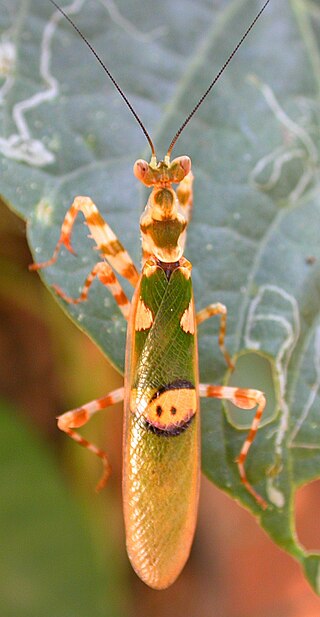
Creobroter is a genus of flower mantises in the tribe Hymenopodini; species are concentrated in Asia. The name comes from the Greek kreo-, meaning "flesh") and broter" meaning "eating", therefore, "flesh-eating", an apt name for a predatory insect. Both sexes have long wings and are capable fliers. Full-grown males are about 3 to 4 cm in length; females are about 4 to 5 cm.
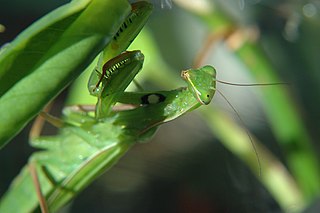
The genus Mantis is in the family Mantidae, of the mantis order Mantodea.
Paratoxodera borneana, common name Borneo stick mantis, is a species of praying mantis found in Brunei that was originally identified as a subspecies of P. cornicollis. In 2009 when the tribe Toxoderini was revised, borneana was classified as a morph due to the lack of major characteristics that distinguish it from cornicollis besides for the absence of a second lobe of the pronotum.

Zoolea is a South American genus of praying mantises.

Rhombodera is a genus of praying mantises native to Asia and possessing common names such as shield mantis, hood mantis, and leaf mantis because of their extended, leaf-like thoraxes.
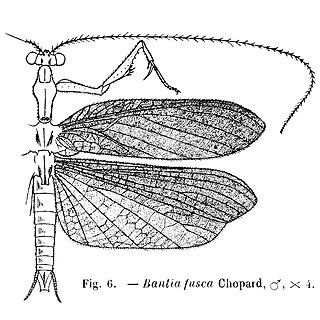
Thespidae is a family of Neotropical insects in the order Mantodea. Following a major revision of this order in 2019, the old-world subfamilies Haaniinae and Hoplocoryphinae, previously placed here, have been upgraded to family level.
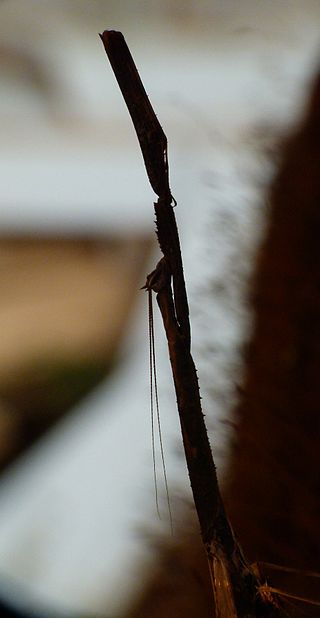
Toxoderidae is a family of praying mantises.

Acanthopidae is a family of mantises consisting of 16 genera in the order Mantodea. The group was first formally split off as a separate family by the German entomologist Reinhard Ehrmann in 2002. In 2016, five genera were moved from Acanthopidae to the newly created family Acontistidae, but this has not been accepted in most recent classifications.
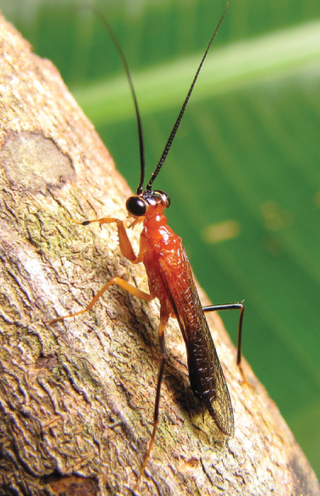
Mantoididae is a family of praying mantises which contains Neotropical species of praying mantises from tropical North and South America. The family was formerly represented by the sole genus Mantoida, until the genus Paramantoida was described in 2014 and Vespamantoida in 2019. The family differs from the closely related Chaeteessidae in having an apical claw on the fore tibiae which are also less curved. Males have ocelli and a cylindrical body shape, unlike the dorsoventrally flattened Chaeteessidae. The cerci are also shorter.
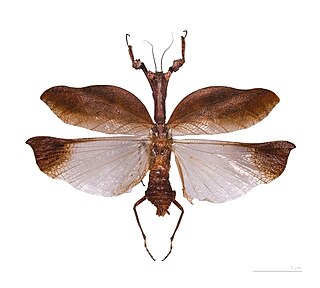
Acanthopini is a tribe of mantises in the family Acanthopidae. Ii is the only tribe in the subfamily Acanthopinae and contains eight genera and 37 species.

Paratoxodera is a genus of praying mantids in the family Toxoderidae and tribe Toxoderini; species are recorded from Indo-China and Malesia.
Thespinae is a subfamily of mantises in the family Thespidae. There are 16 genera and at least 40 described species: found in Australasia, Central and South America.
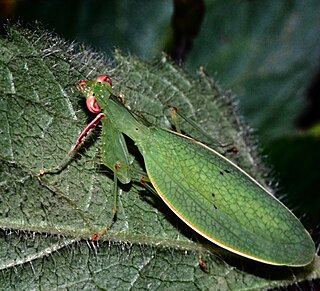
The Nanomantidae are a new (2019) family of praying mantises, based on the type genus Nanomantis. As part of a major revision of mantid taxonomy, genera and tribes have been moved here, substantially replacing the old family Iridopterygidae.
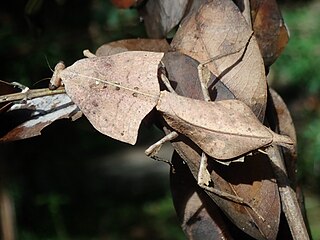
The Deroplatyidae are a new (2019) family of praying mantises, based on the type genus Deroplatys. As part of a major revision of mantis taxonomy, the subfamily Deroplatyinae has been moved here from the previously-structured family Mantidae.
Toxodera hauseri is a species of praying mantis found in Thailand, Malay Peninsula, Java, and Borneo. However, there are no records of a Bornean specimen of T. hauseri, only a photographic record from Poring Hot Springs. This species closely resembles T. fimbriata but is distinguished by the greater width of the leaf-like expansions of the medial femurs.
Toxodera maculata is a species of praying mantis found in southern China, Laos, Thailand, West Malaysia, Sumatra, Java, and Borneo. Females have a body length up to 130mm.
Toxodera fimbriata, common name feathered mantis, is a species of praying mantis found in Myanmar, Malay Peninsula, Sumatra, and Borneo. This species is easily distinguished by others of the genera by their strong curved pronotum.















